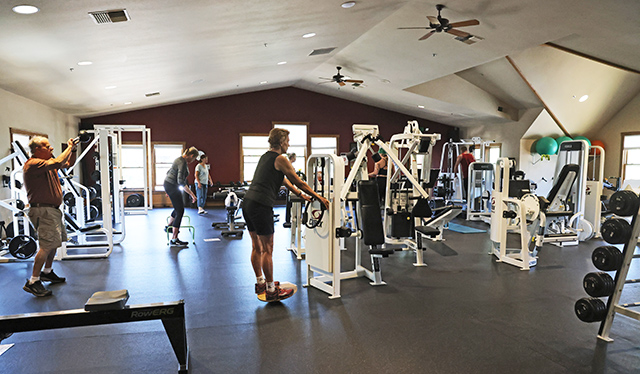Volcano Veggies grows greens indoors using aquaponics
Published 12:00 am Tuesday, May 15, 2018

- Volcano Veggies grows greens indoors using aquaponics.
Two stories of green vegetables grow under lights and above round tanks of teeming fish, awaiting their turn to be harvested at Shannon and James Sbarra’s farm.
Groups of workers place starter plants into racks, and others pack the leafy greens in clear plastic boxes that will be on store shelves the same day.
This is aquaponics. Certified organic fresh veggies grow from the fertilizer created by cold-blooded fish — tilapia, gold fish and bass — who live in a climate-controlled environment all indoors, Shannon Sbarra said. The couple focuses on growing salad greens, basil and micro greens, but at some point plan on expanding to all manner of leafy greens, she said.
“Our system is extremely complicated to put everything together in a stable ecosystem like what we have,” Sbarra said. “There’s a steep learning curve. It’s been the classic entrepreneurship. But we’re focused on sustainable growth.”
She talked to The Bulletin about the business of aquaponics. Her responses have been edited for length and content.
Q: How did you start this venture?
A: I have an environmental studies degree and had a particular interest in climate change and climate change policy. My husband is an artist who’s resourceful and creative. We’re just entrepreneurs at heart. We were designing our life to be a model for our children. We wanted it to be active, not sitting behind a desk. We wanted to play in our roots, in this community. We had learned about aquaponics in Maui where we lived for a while. It really was about crunching some numbers on the back of a napkin one day and signing a lease and some naive enthusiasm. But how else would you start in this business? It was a matter of timing and opportunity. I’m a serial business idea generator. This one stuck.
Q: Why the name Volcano Veggies?
A: We get that question a lot, and I find that interesting. It seemed pretty obvious to us. We’re growing near the Cascade volcanoes, and we’re growing vegetables. I think the concept is to grow delicious food in an inhospitable environment, and a volcano is not known for being good farmland. To me the volcanoes are the most predominant part of our landscape here, and they’re important to me. I think they capture the spirit of what we’re trying to do and the energy of it.
Q: What do you grow?
A: We currently grow mixed salad greens, basil and micro greens. In the future we might consider strawberries or other products. We’re constantly doing R&D on new products, but in terms of what we have capacity for it’s these products.
Q: How much do you grow in a year?
A: Our systems are about 2-acre capacity in a 200-square-foot footprint. We do indoor organic, vertical aquaponics. The vertical portion makes it an efficient use of space. The vertical is 20 feet tall. We have two systems; at the base of each system, there’s a fish tank; as you go up we grow all the plants.
Q: Can you explain how your operation uses aquaponics to farm?
A: It’s an ancient technology. What’s cutting-edge is it’s indoors and it’s on a commercial scale and it’s certified organic. We’re one of only two indoor organic farms in the country for sure. The biz model is just starting to prove itself. That’s based on a lot of different converging facets. Mostly LED lighting is becoming more affordable. We use approximately the same amount of energy as an outdoor farm. You would expect it to be more, but it’s not. And that’s not using solar. LED is extremely efficient, and it’s an accelerated development of that technology. There is also the full system proprietary design we have developed. Were using components that are used for hydroponics, as well.
Q: What’s the value of local, certified organic?
A: It’s important because of environmental sustainability and health. There is also a side note in how important it is to support the people who grow our food. We’re trying to be environmentally sustainable. We use 90 percent less water then standard outdoor farming. By growing indoors, there’s no water runoff, no pollution to our water sources. Even the best certified organic farmers will put nitrates into the water sources. On the health side of things is that the average head of lettuce travels 1,200 miles from farm to table. Usually three weeks old by the time you eat it. And when you combine it with the fact that vegetables lose 10 percent of their nutrients a day, consuming locally produced organic food is healthier for you.
Q: Where can your products be found?
A: Almost at all the grocery stores in Bend: Newport Market, which actually invested in our company. That was really powerful for us. They’re a company that practices what they preach. And they have been our best promoter by helping customers learn about our product. We also sell at Whole Foods, Market of Choice, C.E. Lovejoy’s Brookswood Market, Safeway, which came to us, but only on the west side, Food for Less, Melvin’s by Newport Avenue Market in Sisters, and a new store that we can announce in a couple of weeks.
— Reporter: 541-633-2117, sroig@bendbulletin.com






